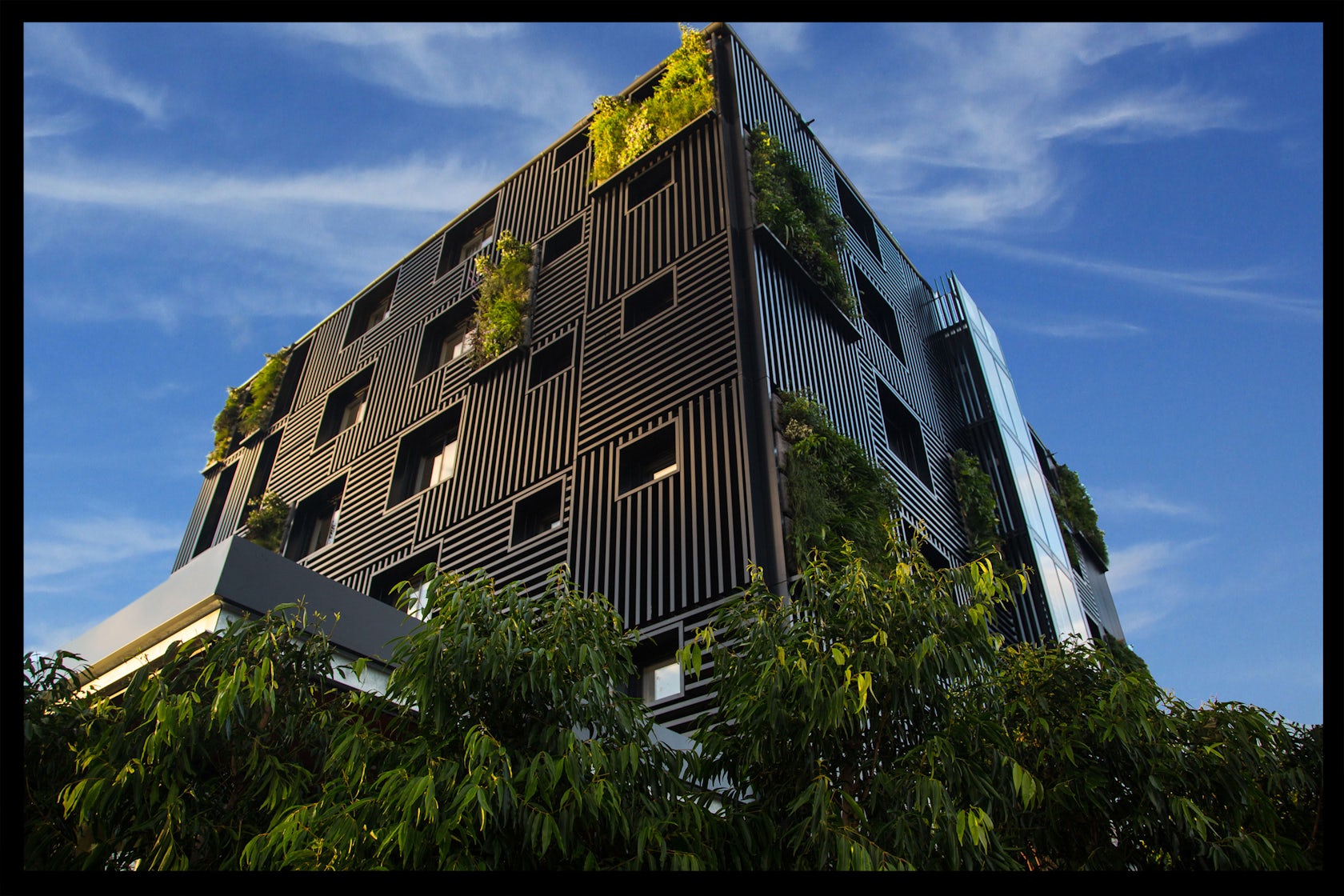To celebrate the opening of our 4th Annual A+Awards, we’re taking a look back at some of our favorite projects from 2015. Want to get in on the action? Check out the A+Awards Page to find out how to enter.
Rarely does technology and environment go hand in hand. We create new systems and mechanics to battle nature or emulate it, but seldom does architecture remain neutral. Designers work endlessly to provide shelter and comfort within challenging sites worldwide. Local constraints and latent conditions drive designs beyond the norms of construction, demanding innovative approaches grounded in technical and pragmatic advancements. Advocating new technologies to solve these contextual demands, architects can push beyond spatial and systemic boundaries to pioneer novel building solutions. It is these contemporary approaches that begin to bring technology and environment closer together.
To celebrate the projects tackling new frontiers, we’ve added a new category to the upcoming Fourth Annual A+ Awards: Architecture + Technology. Rounding up some of the best designs — all A+ winners from recent years — that specifically address the use and application of modern technologies, we’ve created the following collection that explores proposals changing the architectural landscape. Sited in both urban fabrics and remote locations, the designs examine structure, mobility, and sustainable building systems. From high in the Austrian Alps to the frozen expanses of Antarctica, responsive technologies were used to advance human discovery and provide sensitive places to live.

© Reiulf Ramstad Arkitekter

© Reiulf Ramstad Arkitekter
National Tourist Route Trollstigen by Reiulf Ramstad Architects, Trollstigen plateau, Norway
Carefully resting along a pass between Norway’s iconic fjords, the National Tourist Route Trollstigen was created to fold program into the landscape for an intimate experience. A “thin thread” guiding visitors along the site, the design incorporates visual slenderness addressing static strength. The project advocates sustainability, high durability, and localized material technology.

© Sam Burrell

© James Morris
Halley VI Antarctic Research Station by AECOM and Hugh Broughton Architects, Antarctica
Designed as the world’s first relocatable research facility, this station was made to advance modern polar research. The project was realized through comprehensive coordination efforts and attention to detail. Technologically, the station was created as a beacon for sustainable living.

© Brenchley Architects

© Brenchley Architects
142 Park St by Brenchley Architects, South Melbourne, Australia
142 Park St is an adaptive reuse project of an existing motel building from the 1960s. The building’s ‘second skin’ was made of black aluminum batten and vertical garden panels to champion environmental technology and help reach a NATHERS 8.0 star rating. The finished design aimed to allow residents to enjoy green environments in an urban context.


© minarc
Ion Luxury Adventure Hotel by Minarc, Selfoss, Iceland
This hotel was created for visitors to experience Iceland as an adventure destination. Sited on the slopes of Mt. Hengill, the structure rests in a scenic area near Thingvellir National park. The hotel is also surrounded by nearby hot springs used for geothermal energy.

© Jackie Meiring

© Crosson Architects
Hut on Sleds by Crosson Clarke Carnachan Architects, Whangapoua, New Zealand
The Hut on Sleds project was created within a coastal erosion zone, a site that requires all buildings to be removable. Designed on two wooden sleds, the project can move farther inland or be loaded onto a barge. A simple, natural aesthetic combines with pragmatic demands to establish an efficient, sustainable retreat.

© Baumschlager Hutter Partners

© Baumschlager Hutter Partners
Wildspitzbahn by Baumschlager Hutter Partners, Pitztal, Austria
Wildspitzbahn was created as a study in technical feasibility and natural conditions. Dangerous environmental conditions prompted the use of an innovative steel and aluminum framework to ground the building. The architecture was designed to blend into its snowy site.




